
Four Years Since the Second Nagorno-Karabakh War: A Data-Driven Reflection on Escalations Between Armenia and Azerbaijan
It has been four years since the Second Nagorno-Karabakh War erupted, yet the region continues to witness significant escalations along the Armenia-Azerbaijan border. As with any modern armed conflict, the confrontation unfolds not only "on the ground" but also in the information space. At times, information warfare becomes even more critical, and can significantly impact the capacities of both sides.
The events of 2020 and later escalations have left numerous traces in the information space, including news reports and official statements from both Armenia and Azerbaijan. While official statements are often biased — crafted to shape public opinion and support information warfare or disinformation campaigns — they remain valuable for analyzing long-term trends and the rhetorical strategies of the involved parties.
Over time, we can now reflect more deeply on the war, subsequent escalations, and the role of information warfare, not only through personal narratives but through a data-driven approach as well.
Daily Reports on Escalations from the Armenian and Azerbaijani Defense Ministries, Smoothed with a 10-Day Average
Access this daily updated tool here to stay informed on escalations along the Armenian-Azerbaijani border.
If one selects all the news related to armed conflicts, border escalations, and reports of provocations from the official websites of the Armenian and Azerbaijani Ministries of Defense, a general trend of escalation and de-escalation can be observed, as depicted in Graph 1 (details on the data collection process can be found in the section "How We Counted" below). The horizontal dashed line represents the average number of reports issued by the Azerbaijani MoD from 2018 to the present used as a reference point since it was the Azerbaijani side that initiated several major escalations.
The analysis of the graph reveals that Azerbaijan significantly outpaces Armenia in terms of information delivery, especially during pivotal events. Most peaks in news coverage related to escalations, such as the 2020 war and the 2023 military operation in Nagorno Karabakh, are dominated by Azerbaijan in the number of reports. Armenia only surpassed Azerbaijan in a few notable instances: during border escalations in May 2021, clashes in September 2022, and near Sotk in May 2023.
Furthermore, Azerbaijan’s major escalations are often preceded by a smaller-scale military actions or information campaigns. These may aim to shape public opinion, justify military actions, mask troops' movements, or divert attention from the planned direction of attack. This pattern corroborates previous academic findings and media reports, including those from Armenia.
Azerbaijan’s offensive during the Second Nagorno-Karabakh War, for instance, was preceded by an information campaign accusing Armenia of provocations, while the military operation in Karabakh in September 2023 was prefaced by both an information campaign and actual military actions.
Analyzing the rhetoric of the defense ministries is also pertinent, as it reflects the official narratives used by both sides. This analysis is divided into two stages: the first from 2018 to 2020, highlighting events preceding and following the Second Nagorno-Karabakh War, and the second from 2021 onward, reflecting changes in conflict dynamics and rhetoric due to the altered status quo. Figure 2 presents word clouds that illustrate the predominant themes in the rhetoric of the MoDs of both countries between 2018 and 2020.
Word Clouds Depicting Key Rhetoric of Armenia (left) and Azerbaijan (right), 2018-2020

The Armenian MOD’s word cloud through 2020 predominantly reflects topics related to the 2020 war. It highlights three main themes: the actions and destruction of Azerbaijani military forces, the defense of Nagorno Karabakh, and efforts to reassure the public that the situation remains stable, albeit tense. The theme of UAVs, which became a crucial tool for Azerbaijan’s military advantage, also features prominently.
In stark contrast, the Azerbaijani MoD’s word cloud for the same period reveals a focus on offensive actions. Reports are dominated by updates on the destruction of Artsakh Defense Army units, precision strikes, and the use of aviation and drones. Additionally, Azerbaijan frequently reported artillery shelling by Armenian forces on its territory, using these incidents to justify its retaliatory measures.
A comparison of these word clouds reveals a significant finding: the Azerbaijani word cloud is notably denser than the Armenian one, reinforcing Azerbaijan’s dominance in the information space. The Armenian Ministry of Defense produced fewer, shorter, and more general statements, while Azerbaijan issued more frequent and detailed reports. Since the analyzed news comes from the English-language sections of the MoDs’ websites, we could expect these reports to be primarily targeted at an external audience. Thus, Azerbaijan’s rhetoric appears to be more finely tuned for international audiences, whereas the Armenian messages seem more like direct translations of domestic communications, with less adaptation for an external context.
Word Clouds Depicting Key Rhetoric of Armenia (left) and Azerbaijan (right), 2021-2024

The rhetoric of both defense ministries has shown notable similarities after the 2020 war. Both sides frequently emphasized armed clashes and small arms usage during escalations as illustrated in the 2021-2024 word clouds. The Armenian MOD often aims to refute Azerbaijan’s claims naming them as inaccurate, while Azerbaijan consistently frames its actions as responses to provocations from Armenia.
Interestingly, Armenian MoD reports have highlighted a specific location of incidents involving the shelling of a metallurgical plant in Yeraskh by Azerbaijani forces in the summer of 2023. This under-construction plant, financed by foreign investments, has become a focal point in Armenian rhetoric. Armenia’s emphasis on this incident appears to be a strategic move to attract international attention and garner diplomatic support by underscoring the violation of foreign investor interests due to Azerbaijani military actions. This shift may indicate an evolution in Armenia’s rhetorical strategy, aiming to engage external actors more effectively — something that was challenging to achieve in 2020.
Analyzing reports on escalations not only provides insights into general trends and helps unpacking each side’s rhetoric but also explores the relationship between different types of events. For instance, it is particularly interesting to compare the dynamics of Azerbaijani MoD reports on escalations with those on military exercises. This comparison is especially relevant given that military exercises are often used to prepare troops for specific operations and covertly concentrate necessary resources.
There are several considerations to keep in mind. First, each military exercise is usually accompanied by several news reports on individual events, so one event may create a dense information flow increasing the number of reports and frequency of mentions. Second, it is plausible that the more significant and diverse the exercise, the more news it generates. Third, when real combat begins, reports on exercises typically diminish or disappear entirely, as frontline events take priority, even if the exercises continue parallel with military operations. Despite these caveats, we can reasonably assume that a decrease in reports on exercises likely indicates their absence, potentially due to preparations for or the onset of military actions.
We can also argue for the reverse logic: the intensification of exercises may indicate both an increased focus on troop training and preparations for military actions. Recent wars and military operations offer numerous examples where exercises masked troop preparations and positioning for conflict. One only needs to recall Russia’s war against Georgia in 2008 or the start of the Ukraine war in February 2022.
With this context, we compared the dynamics of Azerbaijan’s MoD reports on escalations with reports of military exercises by the Azerbaijani army and joint Azerbaijan-Turkey exercises on Azerbaijani soil. The findings are illustrated in the graphic below.
Daily Comparison of Reports on Escalations vs. Military Exercises, Smoothed with a 10-Day Average
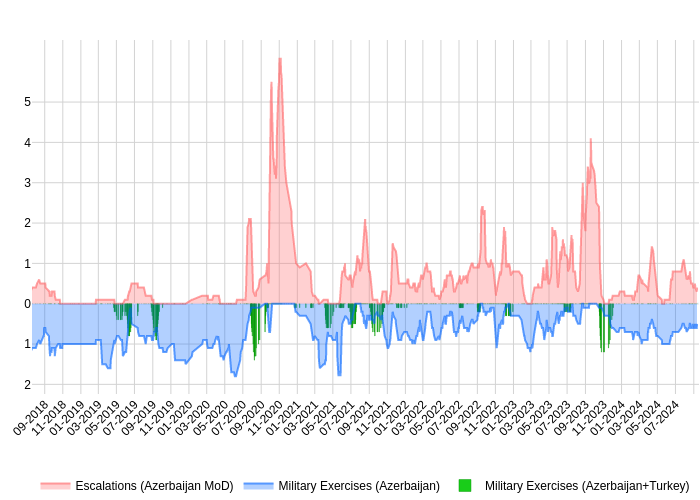
The graph clearly shows that, according to Azerbaijan’s own defense ministry, each major escalation was preceded by a period of intensive military exercises. Before the 2020 war, Azerbaijan was actively conducting training with its units. To be fair, Armenia’s defense ministry reports were also filled with news of exercises that summer, reflecting summer-fall as a logical period for extensive troop training. However, when we contextualize this with the fact that every major military action by Azerbaijan was preceded by joint Azerbaijan-Turkey exercises on Azerbaijani territory, the connection between military drills and subsequent escalations becomes difficult to ignore. This is further evidenced by the presence of Turkish military units, particularly F-16 fighter jets and Bayraktar drones, in Azerbaijan during the Second Nagorno-Karabakh War.
Summary:
The data-driven analysis of escalations between Armenia and Azerbaijan since the Second Nagorno-Karabakh War reveals that:
- Azerbaijan consistently dominated the information space, issuing more detailed reports on escalations and military actions fine-tuned for external audiences, compared to Armenia.
- Major escalations are often preceded by smaller-scale incidents or information campaigns, as seen in Azerbaijan’s systematic narrative of Armenian provocations before both the 2020 war and the 2023 military operation in Nagorno Karabakh, which served to legitimize its actions.
- Post-2020, both parties have evolved their rhetoric: Azerbaijan has shifted from emphasizing offensive military actions to framing its military moves as defensive responses to Armenian provocations. Armenia has transitioned from focusing on the defense of Nagorno Karabakh to refuting Azerbaijani claims and highlighting incidents with international implications, increasing reliance on international diplomacy to counter Azerbaijan’s dominance.
- The military exercises, particularly joint Azerbaijan-Turkey exercises, often coincide with the build-up to major military actions. The presence of Turkish F-16s and Bayraktar drones during the 2020 war suggests that Azerbaijan leverages these exercises not only for training but also as preparation for military engagements, using military exercises as a tool for both tactical preparation and signaling.
In conclusion, this analysis of open-source data demonstrates the complex interplay between military actions, information warfare, and diplomatic maneuvering in the ongoing Armenia-Azerbaijan conflict. While Azerbaijan’s dominance in both military and information arenas is clear, Armenia’s shifting strategies toward internationalizing the conflict, particularly by emphasizing incidents that affect foreign interests, highlight the multifaceted nature of modern conflict management. As the conflict continues to evolve, these trends underscore the importance of both military capability and the ability to shape the narrative in securing strategic advantage. The dynamics of escalation will likely remain intertwined with both military maneuvers and information warfare, with both sides continuing to vie for control over public perception and diplomatic support.
___________________________________________________________________________________________
How We Calculated
This analysis relies on open-source data, meaning the information is not exhaustive and may be biased. For example, a single event — such as a military exercise — can be covered in a series of reports, each highlighting a different aspect adding to the frequency of mention. The shelling by the opposing side may be emphasized, while violations of the rules and laws of war by one’s own forces may be minimized. Nevertheless, despite these limitations, open-source data enables us to discern broader trends and gain insight into how rhetoric and information warfare are conducted.
Dynamics of Escalations
The data for analyzing the dynamics of escalations was collected from the official websites of the Ministries of Defense of Armenia and Azerbaijan. For consistency, the English version of the news section was used to scrape the relevant news pieces. To ensure accuracy, the news items were filtered using language models, selecting only reports related to escalations such as firefights, military equipment buildups, provocations, UAV incursions, combat operations, shelling, strikes, and destruction of equipment or just the reports aimed to refute the information/disinformation about the specified events distributed by an opponent.
Further filtering was applied to retain only the news reports directly mentioning Azerbaijan as an opponent or the Artsakh Defense Forces as an ally of Armenia and Armenia and Artsakh Defense Forces as the opponents of Azerbaijan. The selected news pieces were then aggregated by day, allowing a clearer visualization of the trends in escalations over time.
The general trend illustrates the number of reports concerning escalations daily, starting from January 1, 2018. The x-axis represents the months and years, while y-axis values and points on the graph reflect the number of reports from the MoDs of both countries.
The lines on the graph represent trends smoothed with a 10-day average, allowing for better visualization of the messaging dynamics, rather than raw data.
Word Clouds
Word clouds were generated based on the filtered news reports from both MoDs, which were used to analyze the dynamics of escalation and de-escalation. The full text of the news pieces was used. The news pieces were initially categorized by topics utilizing a language model. In the next step, each topic's 10 most frequent words were selected to build the word clouds. Stopwords, settlement names, and regional references were excluded to focus on the rhetoric surrounding the actions of each side, rather than the locations involved.
Military Exercises and Escalations
Data on military exercises conducted by the Azerbaijani army was gathered from the Azerbaijani Ministry of Defense’s news reports and manually filtered. Only reports on exercises conducted by the Azerbaijani army on Azerbaijani soil without the participation of foreign countries were included.
For joint Azerbaijani-Turkish exercises, only reports on training events involving both countries on Azerbaijani territory were considered.
Each news item was counted as one exercise, though a single military exercise usually generated multiple reports. Notably, ceremonial events, conferences, and receptions related to the exercises were excluded from the analysis, focusing solely on reports concerning combat training or inspections of military units.
The lines on the graph represent smoothed trends, allowing for better visualization of the messaging dynamics rather than raw data.
Iurii Agafonov
Research Fellow, Yerevan Center for International Education (YCIE), Scrapalyze Lab
Main photo by Kate Mamyan
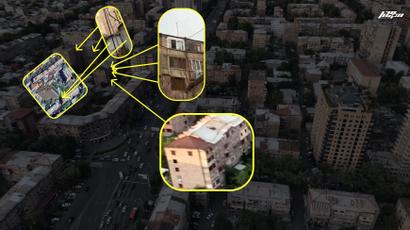

!["The fact of Artsakh not being part of Azerbaijan is of greater importance than concerns about food." [Blockade from the inside]](https://cdn.infocom.am/enlarge?file=2023-08-04-3e113b85-6b81-4589-b241-11323a00de2b.jpg&type=jpeg&width=410&height=230)
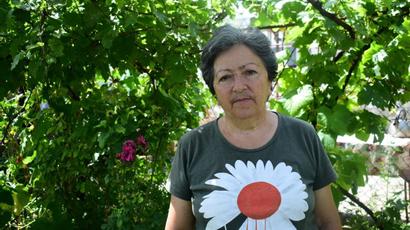

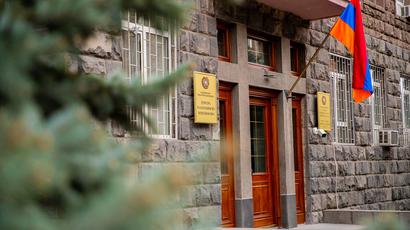
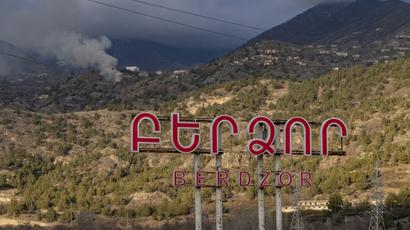
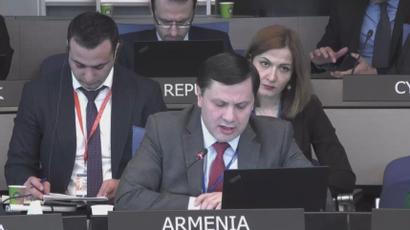
comment.count (0)